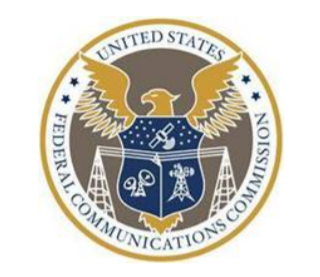UPDATE AT&T was the big winner in the FCC’s auction of licenses in the 3.45 GHz band, followed by DISH and then T-Mobile. Verizon did not bid, Inside Towers reported. Now that we know all the holdings in the upper mid-band spectrum bands, analysts share some thoughts about how it impacts 5G going forward.
The 3.45 GHz auction had fewer licenses up for auction than in the C-band auction, however, resources were more “constrained” in the 3.45 GHz auction, according to the New Street Research analysts. “In that context, carriers unequivocally couldn’t overpay (in fact, they got a steal), and the winners are still the carriers who won the most spectrum,” notes the head of the U.S. team for New Street Research Jonathan Chaplin in a client note.
Until December 2023, the bulk of Verizon and AT&T’s C-band winnings are unusable, he notes. With no more spectrum in the immediate pipeline except for a small 2.5 GHz auction that the analysts expect T-Mobile to loom large in, “3.45 GHz winnings, the 100 MHz of the C-band Verizon and AT&T have early access to, and the 2.5 GHz spectrum T-Mobile already has will be the main bands for 5G,” states Chaplin.
He calls T-Mobile’s early spectrum advantage “daunting.” Chaplin adds that, on top of T-Mobile’s time-to-market advantage, for the next two years, it has access to more upper mid-band spectrum than all of their competitors combined.
“On a national average or population-weighted basis, Verizon’s Category A licenses give them 35 MHz (60 MHz covering 58 percent of the population) of C-band to deploy until December 2023, with AT&T having the other 23 MHz of Category A C-band (or 40MHz covering 58 percent of the country),” Chaplin writes. The pair will begin using this portion of their larger C-band winnings on January 19.
“With their 3.45 GHz winnings, AT&T will have 63 MHz of upper mid-band deployable before 2024; their position relative to Verizon has improved, though they are behind Verizon on actually deploying equipment to towers,” he explains. “Even when all upper mid-band spectrum is deployed after the end of 2023, the T-Mobile advantage holds, as they will have 220 MHz of upper mid-band vs. 161 MHz at Verizon and 120 MHz at AT&T.”
“This pickup could be a game changer for AT&T as it only won 40 MHz of the A-block in the C-band auction,” noted spectrum specialist and BitPath COO Sasha Javid, in a blog post. The additional 40 MHz won in this auction combined with the 40 MHz of A blocks won in the C-band auction could actually give AT&T a better mid-band 5G offering for the next two years.”
But it’s not all doom and gloom for AT&T and Verizon. While T-Mobile retains an advantage, Verizon and AT&T have materially improved their position. Chaplin sums up: “If they hadn’t acquired as much spectrum as they did, the consequences could have been dire, playing out either through massive share losses or from price cuts. T-Mobile will still have more industry capacity than Verizon and AT&T combined, and we would expect pressure to ratchet up as T-Mobile completes its network shutdown and integration.”
DISH gained spectrum that NSR characterizes as “critical” to keeping its cost structure low. It notes that DISH’s participation in the auction is positive for the value the company can create in the long run.
DISH’s auction spend “is a big number and far more than I (or anyone) predicted,” Javid said. Or to put it another way, “DISH once again came to the FCC’s rescue spending big in this auction,” he said, adding that auction 110 was the third biggest ever in the U.S.
By Leslie Stimson, Inside Towers Washington Bureau Chief





Reader Interactions